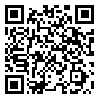BibTeX | RIS | EndNote | Medlars | ProCite | Reference Manager | RefWorks
Send citation to:
URL: http://mjiri.iums.ac.ir/article-1-4446-en.html

 , Seyed Ali Javad Moosavi
, Seyed Ali Javad Moosavi 
 , Maryam Dastoorpoor
, Maryam Dastoorpoor 
 , Zahra Mohamadipour
, Zahra Mohamadipour 
 , Parvin Mousavi Ghanavati
, Parvin Mousavi Ghanavati 

Background: The aim of the present study was to evaluate the utilization and diagnostic yields of CT pulmonary angiography (CTPA) using the Revised Geneva score and Wells’ criteria, in patients with suspected pulmonary embolism (PE).
Methods: One hundred and twelve adult patients underwent CTPA for suspected PE were participated in this study. The outcome was positive or negative CTPA for PE. Revised Geneva and Wells’ scores were calculated. The relationship between the results obtained from these two scores and the available risk factors were compared.
Descriptive analysis such as frequency and mean as well as analytical statistics including chi-square were done. The data analysis was performed using SPSS (v. 22).
Results: In this study, according to the Wells’ criteria calculated for the patients, 33.9% of the patients had low clinical, 56.3% intermediate and 9.8% high clinical probability. Among the 11 high clinical patients, 9(81.8%) were CTPA positive. Based on the revised Geneva score, 65 patients (58%) had low clinical, 36 (32.1%) intermediate and 11(9.8%) high clinical probability. Among the 11 high clinical patients, 8 were CTPA positive. Positive predictive value of the low clinical patients based on Wells’ criteria and the revised Geneva score was 18.4% and 30.8%, respectively. Also, positive predictive value for high clinical probability of Wells’ criteria and the revised Geneva score was 81.8% and 72.8% respectively.
Conclusion: Under/overuse of CTPA in diagnosing PTE is a common problem especially in university hospitals. It is possible to avoid unnecessary CTPA requests using scholarly investigations and more accurate clinical risk assessments.
| Rights and permissions | |
 |
This work is licensed under a Creative Commons Attribution-NonCommercial 4.0 International License. |





